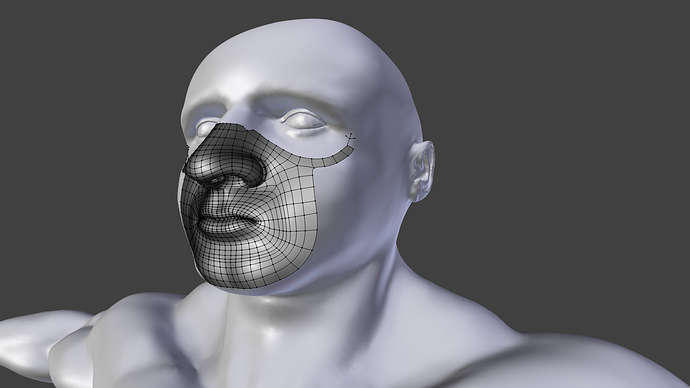Hello everyone, this is following the project that I would like to say finished from modeling and sculpting side of it. I recently started the topology process. here is what I have so far. let me know what you think or if i’m on the right path or not. I am planning on removing some edge loops when i finish and detail it by using sculping. :o
The poly count is realy too high even for high end renderings like Hollywood movies, you should try to redo this piece again with 1/4 of polys.
Stop Staring Facial Animation Done Right from Jason Osipa it’s a great start point for facial topology, it’s not rule, but he have a huge understanding of animated characthers.
I agree with Douglas, you have a lot of unnecessary loops on here. Try adding in loops only along facial features, valleys and ridges etc, and then later you can add loop cuts to define areas if you need to.
Attachments
yeah, i kinda figured i have alot of edge loops, specially when i look at other people’s work. Thank you all for the suggestions.
Hello world, its been a while that i have uploaded an update, so here it is, before life gets in the way again  . still WIP, but i have finished the head portion. i tried to take out as much edge loops as possible and in the same time not a lot to avoid a blocky looking head. mybe will take out more. i really wanted to do a 360 animation for it showing the matcap and the wireframe, but i cannot seem to able to, because i have to render it and that takes away the matcap and the wireframe, anyone know how can i animate the view port and show my character as is without having to first create or add material or nodes just like i how i did these pix? comments are welcome as well
. still WIP, but i have finished the head portion. i tried to take out as much edge loops as possible and in the same time not a lot to avoid a blocky looking head. mybe will take out more. i really wanted to do a 360 animation for it showing the matcap and the wireframe, but i cannot seem to able to, because i have to render it and that takes away the matcap and the wireframe, anyone know how can i animate the view port and show my character as is without having to first create or add material or nodes just like i how i did these pix? comments are welcome as well
Attachments
Hi, I’d like to clarify something: The reason to use FEW edge loops, even for a hi-poly model, is because you can always add more in with a subdivision surface. Having fewer edge loops is efficient and removes chances to make mistakes in the model (it’s a lot easier to manage fewer vertices. Each one should have its own purpose and add specific details to the model). Topology becomes frustratingly difficult to fix when there are a lot of extra verts. And of course, one of the chief reasons is to make the model easy to animate- animators will hate it if the rig constantly lags.
You can reduce the polycount even further. The best way is to carefully manage the circles around the lips and eyes-- I usually start there. You also might consider hiding the sculpt from time to time. Seems counterintuitive, but it’ll help you put each point exactly where it needs to be, and then you’ll be able to correct any mistakes the sculpt may have contained.
Topology is all about anatomy, so it helps to have a lot of anatomy knowledge. For example, the neck isn’t just a tube, it’s a complex column of bone with muscle wrapped and intertwined all around. I usually follow that long muscle under the ear all the way to that place between the collar bones where they meet in the middle, which maybe you’ve already started. I apologize for not knowing the precise medical names, I really should.
Overall, I’d say it’s a good start, watch the ears, they should go last because they might be the single most difficult part of the human body to model. Seriously. And since they’re not actually very important they can afford to be subordinate to the rest of the face. Think of a way to make it look as elegant and efficient as possible, and remember to leave the sculpt behind if it holds you back.
Another nitpick: the circle around the mouth should be taken further. I think it’s too small. Make sure to plan ahead to the facial animations, you’ll be mad if you find out later you can’t get an expression to look right. Also, check what it looks like rendered (default shader’s good enough, just need to see the form) . Good topology looks smooth even without any SS.
You’ll learn more each time you do it, so be prepared to do this again and again and again. Like any skill it takes a lot of practice.



